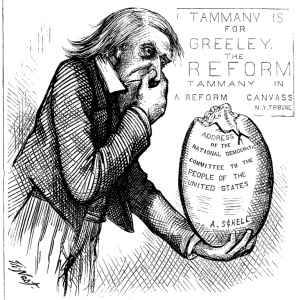This third article of 2015 continues our discussion of the I-20 Corridor becoming the next Austin, Texas, a region enabling the creation of an entrepreneurial ecosystem to support torrents of new business venture creation. It will come in two parts.
Parts 1 and 2 are written with one purpose: to help our region’s entrepreneurs. Without your ideas, courage, stamina, fortitude and yes a good sense of humor, the possibility of developing our entrepreneurial ecosystem dries up.
As mentioned in the first two articles, the key resource for new ventures when needed is capital. I have been fortunate to be involved in our growing entrepreneurship ecosystem for the last four years. I am honored to be on the board of Cohab and a key contributor to the Louisiana Start Up Prize. From these experiences I have interacted with many of our great entrepreneurs. However, I have noticed varying, and sometimes not quite correct views in some of our region’s venture leaders about venture capital investing. I hope to provide a basic view of venture capital investing in this article, what it means for our region and hopefully help gain some common understanding. A caveat: many people use different terms in and around venture capital investing causing these varying and confusing views. I will provide my overview based on my experience in the field over the last thirty years and the best single book I know of for the entrepreneur, The Startup Company Bible for Entrepreneurs by Michael Stathis. This book covers topics such as idea formation, strategic planning, due diligence, financing approaches, term sheets, valuation, etc. It is a near complete compendium for the entrepreneur.
 First let’s remind ourselves of the difference between venture capital and private equity investing. Private equity investors buy underperforming existing firms, usually through a leverage buyout where debt is used to finance the buyout. The existing firms usually have good products and maybe a good brand, but are still underperforming. The private equity teams buy these undervalued firms, add value to them and in most cases sell them at a nice profit. For example Onyx private equity fund bought the privately held Husky Injection Molding systems for $906 million, a mere one times revenue multiple, and three years later sold it for $2.6 billion.
First let’s remind ourselves of the difference between venture capital and private equity investing. Private equity investors buy underperforming existing firms, usually through a leverage buyout where debt is used to finance the buyout. The existing firms usually have good products and maybe a good brand, but are still underperforming. The private equity teams buy these undervalued firms, add value to them and in most cases sell them at a nice profit. For example Onyx private equity fund bought the privately held Husky Injection Molding systems for $906 million, a mere one times revenue multiple, and three years later sold it for $2.6 billion.
Also remember at least two kinds of new businesses. One is the lifestyle startup. This is a single restaurant, dry cleaner, etc. that is expected to not grow beyond the one establishment. The other is a major new venture startup, which seeks to raise a lot of capital, make a bold entry into an industry and grow to be a much larger firm. In general, venture capital investors seek the major new venture startups where they expect to earn a huge return on their investment. This is not to say the lifestyle startup is not crucially important for our economy. These firms represent about 65% of the employment in the U.S.
 Next, let’s discuss two major milestones any lifestyle or major new venture startup must go through. First, new ventures must pass the “smell test”. A seasoned investor is tuned into something “smelling fishy”. This usually means the idea represents a real need in the entrepreneur’s mind, but not thought about potential customers willing to pay a price that will cover expenses and especially capital costs as returns to investors. This venture will not proceed further until this thinking and proof of potential happens. Once an idea get past the “smell test”, it must pass the “fatal flaws” test. Here the idea smells good but there are potential traps lurking. Usually this means the idea has competing products and services that are fairly easily substitutable for the idea in question. The entrepreneur is so excited about the idea thinking it is unique and a huge improvement over existing offerings, but missing the fact that many products and services offering far less functionality and benefits are “good enough” \\to give investors their expected return. The entrepreneur is finished with this idea at this point and should “pivot” quickly for a re-configured solution, or simply shut things down and cut losses short. This can be psychologically debilitating for the entrepreneur, but it will be the best advice they will ever get. They can sell for cents on the dollar what they have in the business, hopefully, and treat this as an investment in learning and move on to the next venture having received a fortune’s worth of learning. This happened to me and while devastated, I am still here. In fact this should be a “law” of entrepreneurship at some phase in their education: “Though shalt expect and even welcome being told to abandon your idea early and cut your losses”. Of course we do not want this to happen, but just be prepared.
Next, let’s discuss two major milestones any lifestyle or major new venture startup must go through. First, new ventures must pass the “smell test”. A seasoned investor is tuned into something “smelling fishy”. This usually means the idea represents a real need in the entrepreneur’s mind, but not thought about potential customers willing to pay a price that will cover expenses and especially capital costs as returns to investors. This venture will not proceed further until this thinking and proof of potential happens. Once an idea get past the “smell test”, it must pass the “fatal flaws” test. Here the idea smells good but there are potential traps lurking. Usually this means the idea has competing products and services that are fairly easily substitutable for the idea in question. The entrepreneur is so excited about the idea thinking it is unique and a huge improvement over existing offerings, but missing the fact that many products and services offering far less functionality and benefits are “good enough” \\to give investors their expected return. The entrepreneur is finished with this idea at this point and should “pivot” quickly for a re-configured solution, or simply shut things down and cut losses short. This can be psychologically debilitating for the entrepreneur, but it will be the best advice they will ever get. They can sell for cents on the dollar what they have in the business, hopefully, and treat this as an investment in learning and move on to the next venture having received a fortune’s worth of learning. This happened to me and while devastated, I am still here. In fact this should be a “law” of entrepreneurship at some phase in their education: “Though shalt expect and even welcome being told to abandon your idea early and cut your losses”. Of course we do not want this to happen, but just be prepared.
Thus venture capital investing looks for brand new major new venture startups who at least pass these two kinds of tests. Part 2 will describe this process and how our region’s entrepreneurs should position themselves to participate.
Bill Bigler is Director of MBA Programs and associate professor of strategy at LSU Shreveport. He spent twenty-five years in the strategy consulting industry before returning to academia full time at LSUS. He is involved with several global professional strategy organizations and can be reached at bbigler@lsus.edu and www.strategybest.com
